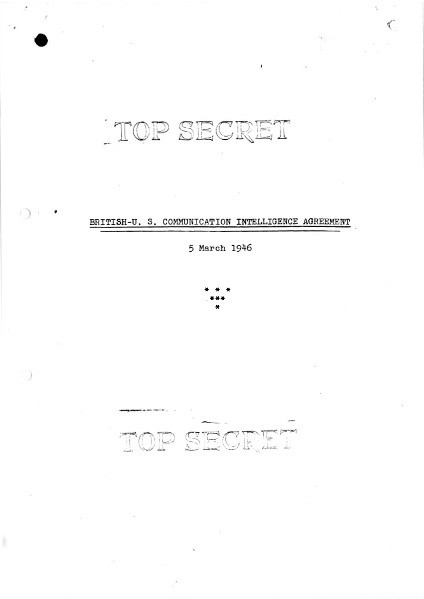
During the Second World War, the Allies’ power was drawn from the strength of its partnerships. In 1946, the post-war signals intelligence relationship between the UK and the USA was captured in the British-US Communication Intelligence Agreement (BRUSA) (1946), which was replaced by the United Kingdom – United States of America Agreement (UKUSA). Although the agreement was originally between the UK and the USA, the UK ultimately sponsored the entry of Australia, New Zealand and Canada into the partnership.
It was not until 1956 that the Australian Government formally agreed to the agreement and the Defence Signals Branch formally joined the alliance. The UKUSA Agreement formalised the basis of what eventually became the multinational signals intelligence, or SIGINT, alliance known as the ‘Five Eyes’. The existence of the Agreement was a tightly held secret for two decades; it was not disclosed to an Australian Prime Minister until Gough Whitlam insisted upon seeing it in 1973. The Agreement was withheld from the public until 2005, and in 2010 many of the details in the Agreement were declassified and released to the US and UK national archives.
Today, Australia’s ‘Five Eyes’ intelligence partners are Canada’s Communications Security Establishment (CSE), the United Kingdom’s Government Communications Headquarters (GCHQ), New Zealand’s Government Communications Security Bureau (GCSB), and the United States’ National Security Agency (NSA). ASD also works with other signals intelligence partners outside of this agreement.
ASD and Australia have benefited immeasurably from the Five Eyes arrangements. Australia has made effective contributions to the partnership, which has, in turn, delivered significant benefits to the nation through technology, innovation, expertise, capability and ‘reach’ — all of which would have been difficult to achieve independently.